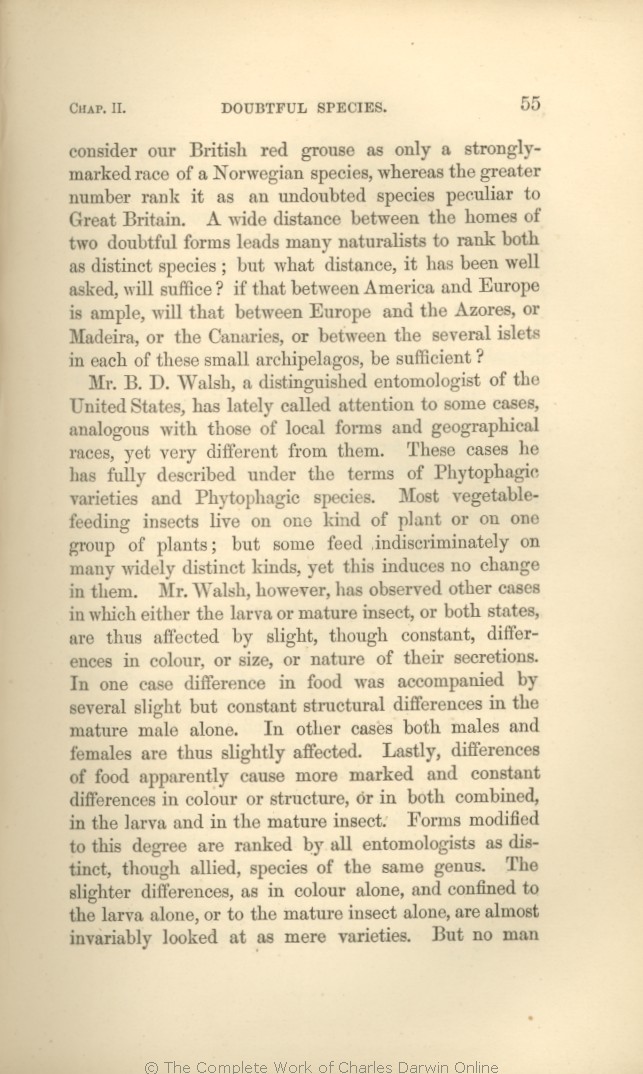consider our British red grouse as only a strongly-marked race of a Norwegian species, whereas the greater number rank it as an undoubted species peculiar to Great Britain. A wide distance between the homes of two doubtful forms leads many naturalists to rank
both | both 1859 1860 1861 1866 | | them 1869 1872 |
| suffice? 1859 1860 1861 1866 | | suffice; 1869 1872 |
| If 1866 | | if 1859 1860 1861 1869 1872 |
| Europe 1866 1869 1872 | | the Continent 1859 1860 1861 |
| between the several islets in each of these small archipelagos, 1866 |
| Ireland, 1859 1860 1861 |
| between the several islets of these small archipelagos, 1869 1872 |
| 1 blocks not present in 1859 1860 1866 1869 1872; present in 1861 | | Some few naturalists maintain that animals never present varieties; but then these same naturalists rank the slightest differences as of specific value; and when even the same identical form is met with in two distant countries, or in two quite distinct geological formations, they go so far as to believe that two separate species are hidden under the same dress.
|
|
|
Mr. B. D. Walsh, a distinguished entomologist of the United States, has lately
called attention to some cases, analogous with those of local forms and geographical races, yet very different from them. | called attention to some cases, analogous with those of local forms and geographical races, yet very different from them. 1866 |
| described what he calls Phytophagic varieties and Phytophagic species. 1869 |
| widely distinct 1866 | widely distinct 1869 1872 |
| man 1866 | | observer 1869 1872 |
|









